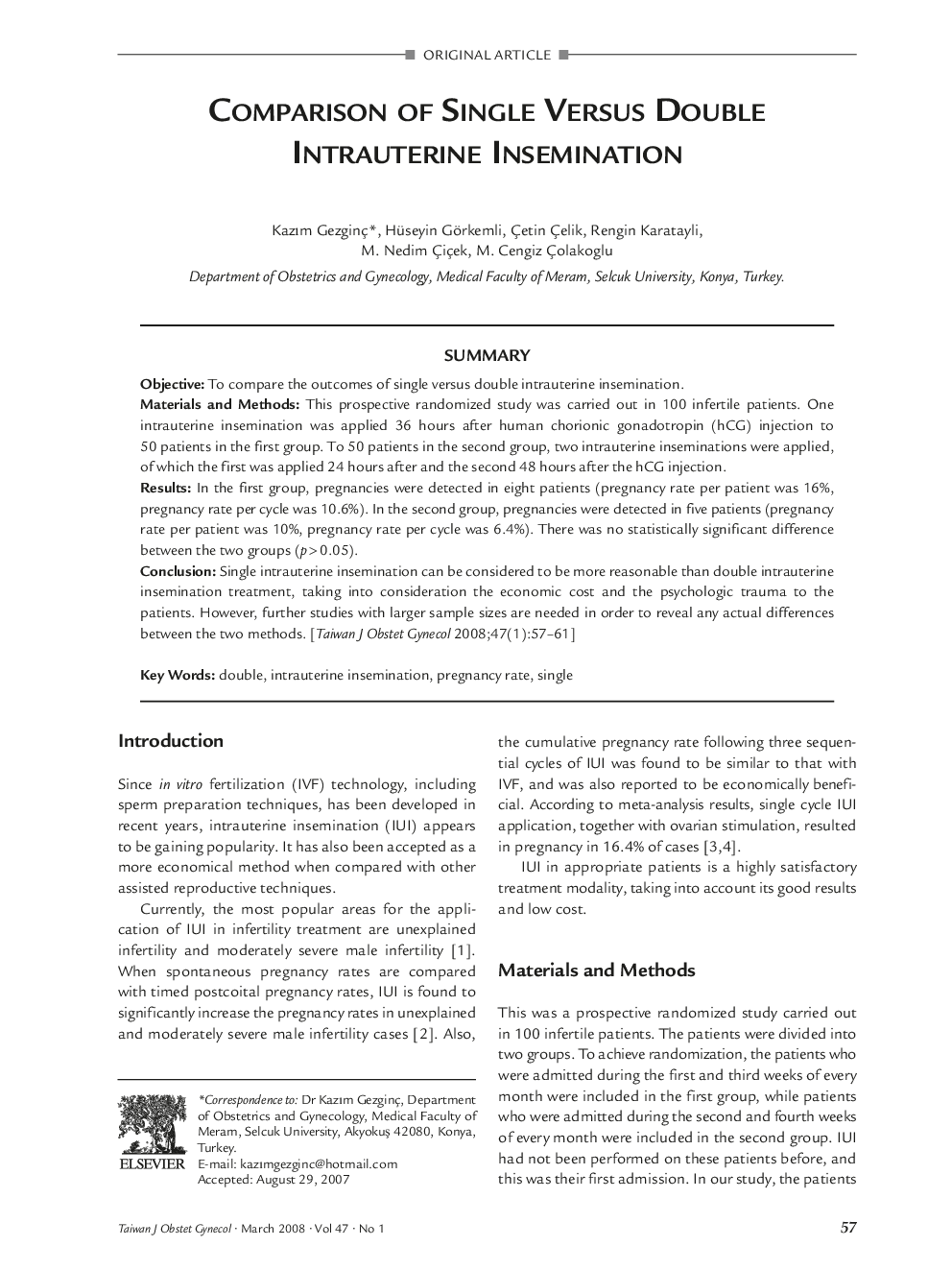| Article ID | Journal | Published Year | Pages | File Type |
|---|---|---|---|---|
| 3976263 | Taiwanese Journal of Obstetrics and Gynecology | 2008 | 5 Pages |
SummaryObjectiveTo compare the outcomes of single versus double intrauterine insemination.Materials and MethodsThis prospective randomized study was carried out in 100 infertile patients. One intrauterine insemination was applied 36 hours after human chorionic gonadotropin (hCG) injection to 50 patients in the first group. To 50 patients in the second group, two intrauterine inseminations were applied, of which the first was applied 24 hours after and the second 48 hours after the hCG injection.ResultsIn the first group, pregnancies were detected in eight patients (pregnancy rate per patient was 16%, pregnancy rate per cycle was 10.6%). In the second group, pregnancies were detected in five patients (pregnancy rate per patient was 10%, pregnancy rate per cycle was 6.4%). There was no statistically significant difference between the two groups (p>0.05).ConclusionSingle intrauterine insemination can be considered to be more reasonable than double intrauterine insemination treatment, taking into consideration the economic cost and the psychologic trauma to the patients. However, further studies with larger sample sizes are needed in order to reveal any actual differences between the two methods.
